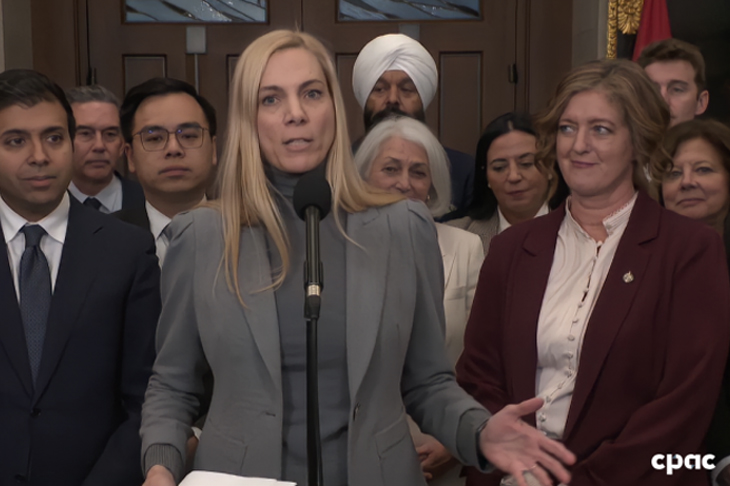By Greg O’Brien
TORONTO – Rogers president and CEO Joe Natale surprised more than a few observers on Monday with the announcement his company would purchase Shaw Communications. Not with the deal itself since that had been a rumour for two decades, but with the level confidence he displayed when saying he believes Canadian regulators will, in the end, approve.
That confidence hadn’t wavered when Cartt.ca spoke with him on Wednesday.
The company went out of its way to offer major incentives to Canadians as sweeteners to the deal: A $1 billion broadband fund to deliver broadband to 600,000 un- or underserved homes in rural western Canada and in Indigenous communities; a promise to keep Freedom Mobile pricing (which is lower than most in the country) where it is for three years; a promise of 3,000 net new jobs in the west; and to establish a new National Centre of Technology and Engineering Excellence, located in Calgary.
The company also promised to spend $2.5 billion building 5G in Western Canada, but it would have to do that anyway, even without the transaction. However, owning Shaw’s extensive wired western footprint would be a much-needed backhaul backbone for all that wireless traffic.
These are significant promises offered as pre-emptive incentives to approve the purchase. Regulators around the world, when approving mergers, regularly force promises out of carriers in similar deals. The state of California, for example, when approving the purchase of Sprint by T-Mobile, told the company it must deliver 5G with speeds of at least 50 Mbps to 94% of the state’s rural population by the end of 2026, expand rural home internet and promise no retail price increases for three years. The Federal Communications Commission placed conditions on the deal, too, as did other states. At least here, Rogers only has to worry about the federal government and the CRTC.
“We want to take a proactive stance,” said Natale in our interview. “We want to say to government ‘these are the essential ingredients for the future we want to sit on the same side of the table with you – and focus on rural connectivity, on Indigenous connectivity, and economic development. We’re as focused on affordability as you are’,” he explained. “We want to strike the right balance between investment and the structure of the industry so that we build this beautiful future as we come out of Covid and really propel the economic recovery.
“What will the future be like when we figure some of this stuff out? Will we get our arms around climate change? Will we have the kinds of jobs and the economic opportunities that you and mom had?” – Joe Natale, Rogers
“The greatest opportunity for all of us as Canadians is to stimulate the growth of the economy… and create a better future for our kids,” he continued. “I’ve had a lot of soul-searching conversations with my daughters (who are) at that age now where they’re just finishing university and asking questions like, ‘what will my job be and what does it look like post Covid? What will the future be like when we figure some of this stuff out? Will we get our arms around climate change? Will we have the kinds of jobs and the economic opportunities that you and mom had, Dad?’
“I find myself getting asked these questions and I keep coming back to the same point: Unless we all work together to drive the economic recovery and make Canada a destination for talent and connect the two million homes that have no Internet connection or poor connection, we’re never going to solve that problem.”
Standing in the way of the future Natale envisions, with Rogers and Shaw as one (he hopes, without the wireless divestitures the Competition Bureau applied to Bell when it purchased Manitoba’s MTS), is the federal government’s practice of ensuring four wireless players in each region of Canada as its primary competition lever. With Shaw’s Freedom under the Rogers umbrella, it would have more than 50% of the wireless market in Ontario, 40% in B.C. and 27% in Alberta, according to a report this week from BMO Capital Markets analyst Tim Casey.
“We expect a protracted regulatory review process into 2022,” said Casey, which is the reason the closing date for the transaction was set for the first half of next year. “We think consolidation in the sector would be a net positive for other wireless operators. However, that assumes the transaction is approved in its current form, which is no sure thing given the longstanding regulatory conditions that have encouraged competition in the sector,” he continued in his note.
Casey however, senses the same thing others are beginning to, that the federal government may now be thinking a bit differently when it comes to telecom policy – that it can’t be solely about the consumer’s retail price point.
“We think there has been a subtle shift in focus away from almost exclusively on service plan prices to bridging the digital divide between urban and non-urban households,” wrote Casey. “Fewer than half of rural Canadians, and about one-third of First Nations communities, have access to high-speed internet.”
Despite those opposing the deal, we at Cartt.ca also see a modified tone from the new ISED Minister, and perhaps this is behind Natale’s confidence. In responding to the Rogers-Shaw purchase announcement, the statement from minister Francois Champagne said: “We have been clear that greater affordability, competition, and innovation in the Canadian telecommunications sector are as important to us as a government as they are to Canadians concerned about their cell phone bills. These goals will be front and centre in analyzing the implications of today’s news.”
Admittedly, it isn’t much to go on, but it reads like a slight change in tone that says the government may no longer just be thinking solely about consumer cell phone bills while setting new policy as 5G begins to take hold. Does that mean the four-player-per-region practice might be altered? No way to tell at this point, but Natale is hoping so.
“We don’t need two urban networks throughout Western Canada.” – Natale
“Our industry is at an inflection point and needs the ability to scale to make 5G a reality, not just a PowerPoint presentation, and to lead the world,” he said. “And the investment cycle is long. These are massive, generational investments, billions of dollars, and scale matters. We’ve been building up 5G for a year now and we launched it in 170 towns and cities (but) we still have a lot of work to do to blanket the entire country.”
As that blanket is built, opportunities extend far beyond faster iPhones to watch 4K Netflix. Another reason a deal like Rogers-Shaw has to happen, from Natale’s point of view, is 5G’s potential in the industrial, commercial, enterprise, resource sectors. With 5G “we have the ability to do network slicing, where we’re taking a piece of our network to dedicate it to that particular operation, to that factory, to that mine, to that surgical site,” explains the CEO.
“We can take a piece of the network and dedicate it to first responders so that ambulances always get priority and if we need to download a bunch of medical data inside the ambulance while the person’s being transported, it’s there in full living color. We can get a video conference going with a doctor or nurse in the moment in the back of the ambulance.
“These are things that are real. These are real ideas, and they only happen if we make the 5G investment.”
And to get to invest in those ideas, spending billions on duplicative networks doesn’t make much sense.
“We don’t need two urban networks throughout Western Canada,” Natale explained. “We can take the money would have spent on urban networks and we could invest it in rural networks and then there are 600,000 homes in western Canada that have either no internet or very poor internet – you take our team and their team, incredibly talented engineers, get that team focused on 5G and the future – then it’s a huge opportunity.”









